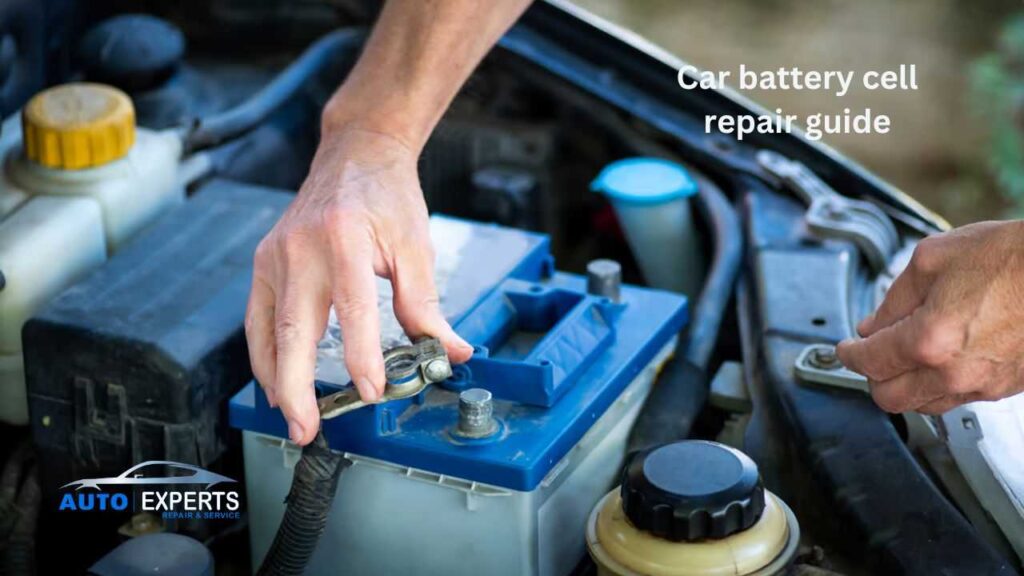A car battery is essential for keeping your vehicle running smoothly. Over time, your battery may wear out or lose power because of problems with the battery cells. Instead of replacing the entire battery, repairing the cells can save money. This guide will show you how to fix car battery cells and give tips to extend the life of your battery.
What is a Car Battery Cell?
A car battery is made up of several cells, each containing lead plates and sulfuric acid, which together produce electricity. Most car batteries have six cells, which produce a total of 12 volts (2 volts per cell). When one or more cells become damaged, the battery may struggle to hold a charge or fail to start the car.
By learning how to repair or replace faulty cells, you can avoid the cost of a new battery and restore its performance.
Signs Your Car Battery Cells Need Repair
Before starting repairs, it’s important to know the signs that your battery cells might be damaged. Here are some common warning signs:
- Slow engine start: If your engine takes longer than usual to start, it could mean weak battery cells.
- Dim lights or electrical problems: Low battery power can affect the car’s lights and electrical systems.
- Needing frequent jump-starts: Regularly needing to jump-start the car indicates failing battery cells.
- Corroded battery terminals: Corrosion around the battery terminals may signal internal cell damage.
- Unusual smells: A sulfur-like smell (like rotten eggs) from the battery could mean a problem with the acid inside.
If you notice any of these signs, it’s time to check and repair your battery cells.
Tools You’ll Need for Battery Cell Repair
Before you begin, gather the following tools:
- Safety goggles and gloves
- A digital multimeter
- Distilled water
- Baking soda
- A wrench or socket set
- A battery hydrometer
- A battery charger
Step-by-Step Guide to Car Battery Cell Repair
1. Safety First
Car batteries contain sulfuric acid, which can be dangerous. Always wear gloves and goggles to protect your hands and eyes.
2. Test the Battery
Use a digital multimeter to check your battery’s voltage. If the reading is less than 12 volts, one of the cells may be damaged. A battery hydrometer can also help you check the condition of each cell, showing which one is faulty.
3. Clean the Battery Terminals
If there is corrosion on the battery terminals, clean it with a mixture of baking soda and water. Disconnect the negative terminal first, then the positive. Apply the mixture and use a wire brush to scrub the terminals. This ensures the battery is connected properly to your car’s electrical system.
4. Check Electrolyte Levels
Carefully remove the battery cell covers. Check the fluid (electrolyte) levels in each cell. If the fluid is low, top it off with distilled water. Never use tap water because it has impurities that can damage the battery.
5. Repair or Replace Faulty Cells
If your tests show that one or more cells are bad, you can repair them. First, discharge the battery fully to avoid shocks. Then, either replace the damaged cell(s) or recondition them.
To recondition a cell:
- Drain the old electrolyte and replace it with fresh battery electrolyte or a solution of distilled water and Epsom salts.
- Charge the battery slowly for 24-48 hours to help revive the weak cells.
6. Recharge and Test the Battery
After repairing the cells, charge the battery using a charger. Once fully charged, test the battery again with a multimeter to ensure it holds 12-12.6 volts.
7. Reinstall the Battery
Reinstall the battery in your car. Connect the positive terminal first, then the negative terminal. Start the car and see if the problem is fixed.
Tips to Prolong Car Battery Life
To avoid frequent battery repairs, follow these tips:
- Regular Inspections: Check your battery every few months for signs of wear, corrosion, or low electrolyte levels.
- Keep it Clean: Regularly clean the terminals and keep the battery area free of dirt and debris.
- Avoid Short Trips: Short trips can prevent the battery from fully charging. Take longer drives now and then to keep the battery in good condition.
- Protect from Extreme Temperatures: Both high heat and freezing cold can reduce battery life. Park in the shade during hot weather and use a battery warmer in cold weather if needed.
- Turn Off Electronics: Make sure all lights, radios, and electronics are off when the car is turned off to prevent draining the battery.
When to Replace the Car Battery
If your battery is 3-5 years old and still has problems after repairs, it might be time for a replacement. Over time, the lead plates wear down, and the electrolyte becomes less effective. A new battery can prevent breakdowns and avoid expensive repairs later.
Conclusion
Repairing car battery cells can extend your battery’s life and save you money. By following this step-by-step guide, you can identify problems, fix damaged cells, and keep your car’s battery in top shape. Regular maintenance will ensure your vehicle runs smoothly and prevent future battery issues.
Take care of your car’s battery, and it will serve you well!
Stay tuned for more news and updates on Infinite Insight Hub!



